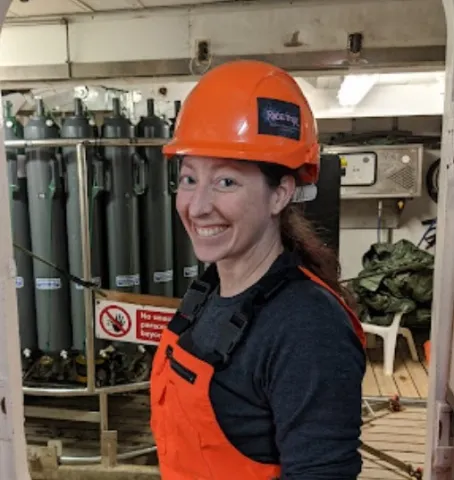About the project
The availability of iron and silicon are key drivers of productivity and carbon drawdown in the Southern Ocean. Although sedimentary supply is known to be important, we need to better understand how particle size and stabilisation will affect how these biogeochemical cycles will change in the future.
The Southern Ocean plays a disproportionately important role in ocean carbon drawdown, accounting for >40% of global anthropogenic C uptake. Cycling of carbon in the oceans is governed by physical and biological processes, and the biological component is limited in many Southern Ocean regions by scarcity of iron (Fe). Although the deep waters of the western Antarctic Peninsula (WAP) are crucial in supplying Fe to waters downstream, we have a poor understanding how much different Fe phases (soluble, colloidal, particulate) contribute to deep water inventories, and how these phases are stabilised during transport. Moreover, it remains unclear how the different size fractions and lability of Fe in sediments, and their subsequent release, is linked to hotspots of surface productivity and interactions with different sedimentary components such as silica.
This project will use novel radium-based approaches to address the key questions: (1) What phases of Fe are most stable in deep shelf waters, and what are the implications for large-scale transport? (2) Is the stability of iron linked to hotspots of remineralization?
Using a sample set previously collected from the northern Antarctic Peninsula, this project will investigate the distribution of iron within different size fractions (soluble, colloidal, particulate) from sediment porewaters to offshore water column, via flow-injection analysis, digestions and leaches, and the state-of-the-art inductively-coupled mass spectrometry facilities at the University of Southampton. To understand how the intensity of sedimentary remineralisation influences iron size fractionation, these results will be coupled with dissolved and particulate distributions and isotope signatures of silicon within sediment cores.
Supervisory team
The supervisory team includes supervisors from several organisations, including our INSPIRE Partners. Please contact the Lead Supervisor for more information about the team.
Training
The INSPIRE DTP programme provides comprehensive personal and professional development training alongside extensive opportunities for students to expand their multi-disciplinary outlook through interactions with a wide network of academic, research and industrial/policy partners. The student will be registered at the University of Southampton and hosted at the National Oceanography Centre.
Specific training will include:
- Training in ICPMS
- Training in flow injection analysis
- Training in non-traditional isotope geochemistry (silicon isotopes)
- Training in the sampling of ocean waters for trace metal analysis according to GEOTRACES protocols, and in sediment sampling and processing
- Statistical analysis, data acquisition and evaluation techniques
Fieldwork is not an essential component of this project. However, there will likely be future opportunities for the student to join an expedition and receive at-sea training in data acquisition and sampling.
